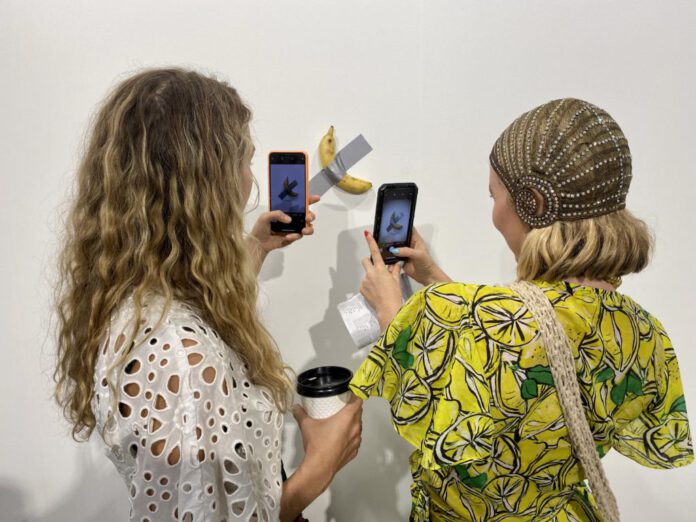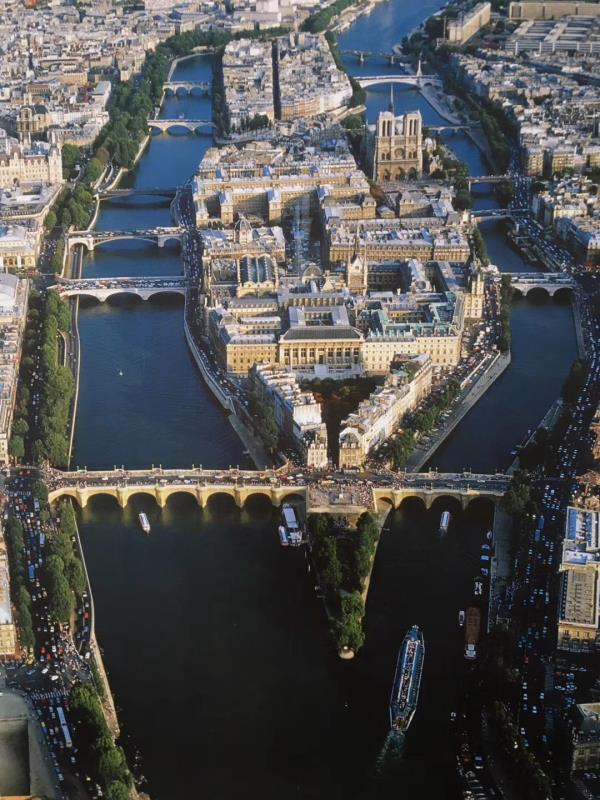
Not a lot of people know how the art market is, almost everyone knows it’s a thriving business. Art market attracts millions of dollars every year, global sales of art reached over 64.1 billion in 2019, although it has a 5% fall in sales compared with 2018, but for a long term, from 2009 to 2019, art market maintains a positive sales growth at 62% and volume growth at 34% as table 1 shows.
| Year | Value ($ millions) | Volume (millions) |
| 2009 | 39,511 | 31.0 |
| 2010 | 57,025 | 35.1 |
| 2011 | 64,550 | 36.8 |
| 2012 | 56,698 | 35.5 |
| 2013 | 63,287 | 36.5 |
| 2014 | 68,237 | 38.8 |
| 2015 | 63,751 | 38.1 |
| 2016 | 56,948 | 36.1 |
| 2017 | 63,683 | 39.0 |
| 2018 | 67,653 | 39.8 |
| 2019 | 64,123 | 40.5 |
| Growth 2018 – 2019 | -5% | 2% |
| Growth 2009 – 2019 | 62% | 34% |
Data Source: Arts Economics, 2020
Europe is one of the most important art markets all over the world, with advanced art education, constant art events, active art creations, long art history and numerous art purchasers.
| Country | US | UK | China | France | Switzerland | Germany | Spain | Others |
| Share | 44% | 20% | 18% | 7% | 2% | 2% | 1% | 7% |
Data Source: Arts Economics, 2020
There are many art styles works in the art market, but as “art for present-day”, contemporary artworks continuously being produced, gradually becomes the dominant art style, even facing criticism and sarcasm that massive amount of people do not understand the artistic value and monetary value of contemporary artworks well since it is too vanguardia and abstract, but institutions and rich people are exchanging those artworks passionately which discretely breaks the records of biding prices.
Do they understand contemporary art deeper than others? How does the value evaluation process?
Contemporary art allows various materials, methods and techniques used in artistic creation, enriching the artistic forms but bringing difficulties in value evaluation as artistic value are subjective depending on different aesthetic preferences of people, but monetary value is objective as the indifferent price set to everyone in the market.
Researchers try to use mathematical models to evaluate the value of artworks, they wish to build a model with selected or defined indicators to represent potential pricing factors, these indicators often are grouped as a profile of artist (name, age, sex, graduate school, place of residence, nationality, etc.), details of artwork (size, material, technique, year, recognition of institution, sold price records, etc.) and information of representative institution (location, institutional affiliation, etc.). Chosen characteristics discussed in the model should appear independently, but the reality is not simple like so.
Many factors in artworks are connected, social backgrounds and social events affecting artist’s opinions that may inspire their works, during the creation process, materials, techniques even forms the artist chooses mirror not only the personal background but also the real world. Without being realized the basic conditions to apply pricing model is so easy to be broken, and when realizing this issue, it is impossible to do the price analysis, but if ignoring this and continuing the model application, the results will be inconvincible. Furthermore, researchers discover that market participants don’t all rely on models that much to define price, the market has its way.
For artists they choose proper geographic markets to optimize the exposure and appreciation of the artwork; find features of their works to identify the specialties; compare with the counterparts to adjust original expectations.
For agents, models are widely used when considering internal factors of artwork, but many external factors needed to be considered when negotiating final prices, for example, Zorloni (2005) discusses the pricing process of artworks nowadays, which more depends on the preferences of the elite such as dealers, collectors and critics, unlike the old time that is influenced more by the academic researchers. Singer (2016) argues that art market has grown deformed, it creates a bubble that seems artists are expressing their thoughts about many unbalanced relationships in this world, which rises attention and prices of their artworks, but it is more like they please capitals to create luxury but useless works, which do not help the world develops better, neither shows the true value of artworks and brings huge ethical issue.
For investors, they have more desires in appreciation and liquidity which bring more financial features in art purchasing. The tax advantage is an important motivation for art purchasers, and many European countries have related policies:
| Country | Net Wealth Tax |
| Belgium | No |
| France | Art assets are excluded |
| Italy | Art assets are excluded |
| UK | No |
Data Source: Deloitte (2019)
| Country | Corporate Tax |
| Belgium | 33.99%, reach certain conditions can reduce graduated tax rates (≤ EUR 322,500) |
| France | 33.33%, taxable deduction of art works from living artists over 5 years |
| Italy | 27.5% (national), 3.9% (regional) |
| UK | 20% – 21% |
Data Source: Deloitte (2019)
| Country | Income Tax |
| Belgium | 25% – 50% (≥ EUR 34,330), may add communal surtaxe |
| France | ≤ 45%; 2 additional contributions:15.5% (additional social security contribution, CSG and CRDS), high income contribution |
| Italy | Income resulting from commercial activities: 19% – 43% (national), 3.9% (regional) Income is not from commercial activities: No |
| UK | 20% – 45% (≥ GBP 150,000) |
Data Source: Deloitte (2019)
| Country | Gift and Estate Tax |
| Belgium | Gift: 3% (direct descendants), 7% (beyond the individual’s immediate family) Estate: Complex rate scales vary from regions, 3% – 30% (spouses, direct descendants), 30% – 80% (others excluding charities) Inheritance: Can be reduced via manual donations of cultural property |
| France | Same but based on family relationship. 5% – 45% (≥ EUR 1,805,677) with a deduction of EUR 100,000, 60% (beyond the 4th degree of family relationships) |
| Italy | Considering the non-taxable threshold amounts and relationships between the transferor and recipient, 0% – 8% (gift, inheritance) ≤ 10% of the entire portfolio transferred (inheritance) |
| UK | No gift tax, but can be as capital gains tax and inheritance tax during lifetime and on death; 20% (gift to a trust during lifetime), 40% (transfers on death) |
Data Source: Deloitte (2019)
| Country | Capital Gains Tax |
| Belgium | Not taxed on the disposal of cultural property if in the management of private assets |
| France | 5% (individual sales ≥ EUR 5,000) |
| Italy | Excluded from the disposal of art assets (national), 3.9% (regional) |
| UK | 18% or 28% (≥ GBP 31,865), annual exemption GBP 11,000 |
Data Source: Deloitte (2019)
The booming contemporary art market has two possibilities, from one side agents may use their advantage knowledge, information and position to promote sales of contemporary art, which encourages artists to create more contemporary artworks, as long as the business goes well, then the artistic value of the contemporary art matters less, to this point the passionate investment in contemporary art is value speculation in fact; from another side artists leading the art development, even people cannot understand contemporary art for now, but as long as artists create more to educate the public, then the recognition of contemporary art will get progress. Agents can see the value of it and would like to sell more, investors will buy more as they have a positive expectation in appreciation of it for a long term, so to this point, passionate investment in contemporary art is a real investment. Two possibilities both exist in the market, no matter market participants chase value speculation or value investment, their considerations and actions all affect the process of value evaluation.
Paris now has a contemporary art exhibition of a famous artist couple: Christo and Jeanne-Claude in Centre Pompidou, which gave us further thinking of investment and pricing issues of contemporary artworks, especially related to its features.
They were typical and representative contemporary art artists, they used new materials following the time, such as polypropylene. Their famous series of work was about packaging, using new materials and threads to package anything they had interests. One of their works was to package Pont Neuf in Paris in the 1960s as figure 1 shows.

Source: Centre Pompidou
Huge work like so surely cost massively in every aspect, they spent decades of years to finalize the details of this project, they used crow funding towards the public to raise enough money to achieve this project, thousands of workers joined the construction as figure 16 shows, and this work attracted over three million visitors as figure 2 shows.

Following pricing models and considerations of market participants, this work should be evaluated high price as it had countless investments and efforts, massive size and influence, and made by famous artists. But the fact is that it’s non-tradable as temporarily existed and related to a historical site. Separating the packing materials from the Pont Neuf causes meaninglessness and valuableness of the artwork. The model can give a value but doesn’t work in the market as no one can afford it, the considerations of market participants can affect the art work but no one can own it as the materials were recycled after the exhibition.
The market can lose its control when facing contemporary art, the challenges of pricing contemporary art are more than this work addresses. If the art style has evolution, models should also be improved to fit contemporary art better, or the price will be manipulated by people, but how far the research process can reach there is uncertain.
(Source: Lanze LIU / Deloitte / McAndrew Clare / Singer Peter / Zorloni Alessia / Sarah Cascone)



